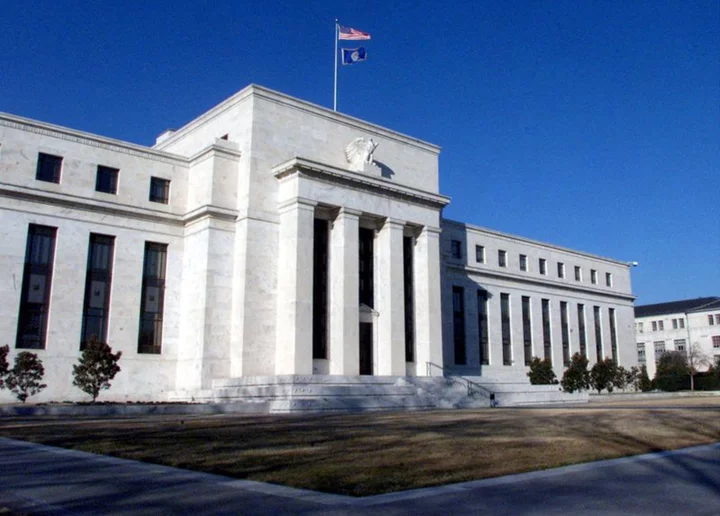By David Randall
NEW YORK Some investors are giving the shares of dividend-rich companies a second look as expectations grow that the Federal Reserve is nearing the end of a rate-hiking cycle that has lifted bond yields to their highest level in nearly two decades.
The Fed’s most aggressive rate increases in a generation have pushed short-term Treasury yields above 5%, their highest level since 2007, widening the options for income-seeking investors after a decade marked by historically low rates. That has helped pressure many of the market’s popular dividend-paying stocks, which investors had turned to when rates were far lower.
With markets betting the Fed is unlikely to raise rates much further, some investors say the shares of dividend payers are starting to look appealing again, as they look for opportunities for income if Treasury yields head lower.
"The 5% you're getting from Treasuries looks to be transitory and that will take some pressure off of these sectors competing for yield," said Jurrien Timmer, director of global macro at Fidelity Investments. "The dividend-paying value side of the market is a pretty compelling place to go to maintain that return."
A nascent resurgence of interest in dividend-paying stocks can be seen in inflows to the $11.7 billion ProShares S&P 500 Dividend Aristocrats ETF, which brought in $33 million in net inflows over the two weeks that ended July 19, its largest two-week gain since January, according to Lipper data.
The fund, which tracks companies that have increased dividends annually for the past 25 years, is up around 7.5% this year, compared with a nearly 19% gain for the S&P 500.
Meanwhile, 44% of global fund managers polled by BoFA Global Research said they now expect high-dividend stocks to outperform those that pay low dividends, a nine percentage-point increase from the previous month.
Timmer is increasingly focusing on financial and energy stocks, betting both sectors will benefit from what he expects to be an economic soft landing that skirts a painful recession.
Overall, S&P 500 companies have been less generous to investors this year, a trend driven in part by lower oil prices forcing energy companies to cut back on payouts, according to Howard Silverblatt, senior index analyst, product management, for S&P Dow Jones Indices.
Companies have increased their payouts by an average of 9.1% so far in 2023, compared with 11.8% in the same time last year, while 14 companies have either suspended or lowered their dividends since the start of the year, up from four a year ago, the firm’s data showed.
Nevertheless, investors are seeking out dividend-paying stocks as a source of total return this year in anticipation that bond yields may falter while stocks continue to gain, Silverblatt said.
“If you are going into dividend paying stocks now, you are taking that risk because you think there's a high probability that the market goes up," he said.
Another reason for dividend payers’ appeal is a broadening of the market’s rally from the cluster of huge tech and growth stocks that led gains for most of the year into other areas. The S&P 500 energy and financials sectors are up 5.7% and 5.6% this month, respectively, compared with a 2.5% gain for the broader index.
"If that belief in a recession fades a little bit there’s more air cover to broaden the market out to some of these dividend payers that hadn't really participated in the rally until a few weeks ago," said Cliff Corso, chief investment officer at Advisors Asset Management. "We see that trend continuing as the Fed gets close to its ultimate stopping point."
Corso is searching for dividend-paying companies in cyclical sectors such as financials, where valuations are less expensive.
Still, some investors are skeptical an economic soft landing would be particularly beneficial for dividend-payers. Bryant VanCronkhite, a portfolio manager at Allspring Global Investments, is looking for companies that are seeking to grow revenues through acquisitions, which he considers a better use of capital than returning dividends to shareholders.
"We're looking for companies that may not have the highest yield, but the capacity to grow yields down the line" due to their larger earnings base, he said.
(Reporting by David Randall; Editing by Ira Iosebashvili)

